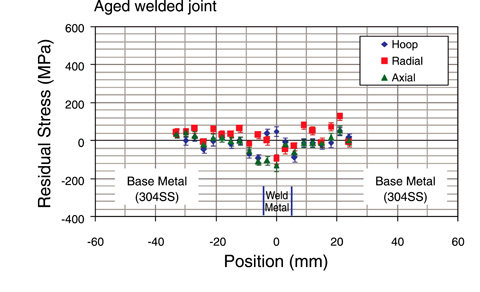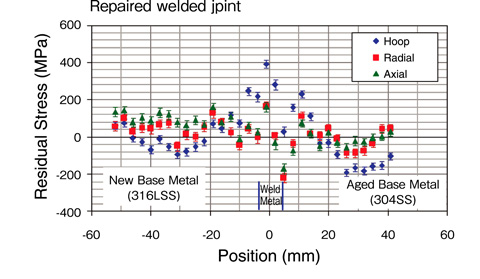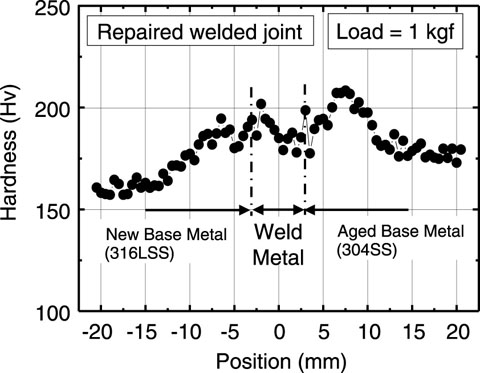
Fig.1-13 Residual stress distributions at the welded joint used in Phenix

Fig.1-14 Residual stress distributions at the repaired welded joint

Fig.1-15 Hardness test results of the repaired welded joint
To extend the service life of fast breeder reactor (FBR) plants, the effect of aging (use for a long time in FBR plants) on the mechanical properties of the structural materials needs to be evaluated. The evaluation of welded joints is considered particularly important. However, very few evaluations have been performed on the aging of welded joints in use for a long time in FBR plants; thus, acquisition and evaluation of data on aging is desired. In this study, the focus is on welded joints ’ residual stress and hardness that are the properties corresponding to the strength of the material. The evaluations were performed on a welded joint of austenitic stainless steel that had been in use for a long time (approximately 88000 h at 526∼545 °C) in the secondary cooling pipe of the fast breeder reactor Phenix in France.
Measurement of the residual stress of the welded joint was carried out using a neutron ray, and the results are shown in Fig.1-13. The residual stress is observed to be low for the aged welded joint (AWJ), and it decreases (relaxes) while the plant is in operation. The hardness distribution in the AWJ is almost uniform, but this is not shown in the figures. There are no areas where degradation in mechanical properties is observed.
An actual plant is likely to have repaired welded joints (RWJs) in which an unaged material (new material) might be welded onto a material that has been used for a long time (aged material). In such welded joints, the mechanical properties are anticipated to be inferior to those of a welded joint in which both materials are new, because one part of the welded joint is composed of the aged material. Therefore, to extend the plant service life, it is also important to evaluate the effects of such RWJ. Fig.1-14 shows the measured residual stress of an RWJ in which a new material was welded onto an aged material that had been in use at Phenix. Repair welding causes residual stress; however, as shown in Fig.1-13, the residual stress will reduce while the plant is in operation. Therefore, in an operating FBR plant, the influence of residual stress on mechanical properties is assumed to decrease. Fig.1-15 shows the hardness test results of the RWJ. It is observed that hardness varies near the aged base metal part of the welded joint. A pronounced change in hardness can cause stress concentration, which might degrade the mechanical properties of the welded joint. Although further investigation of the mechanical properties of the RWJ is needed, the results of this study suggest that the change in hardness is an important index in the evaluation of mechanical properties of RWJ.